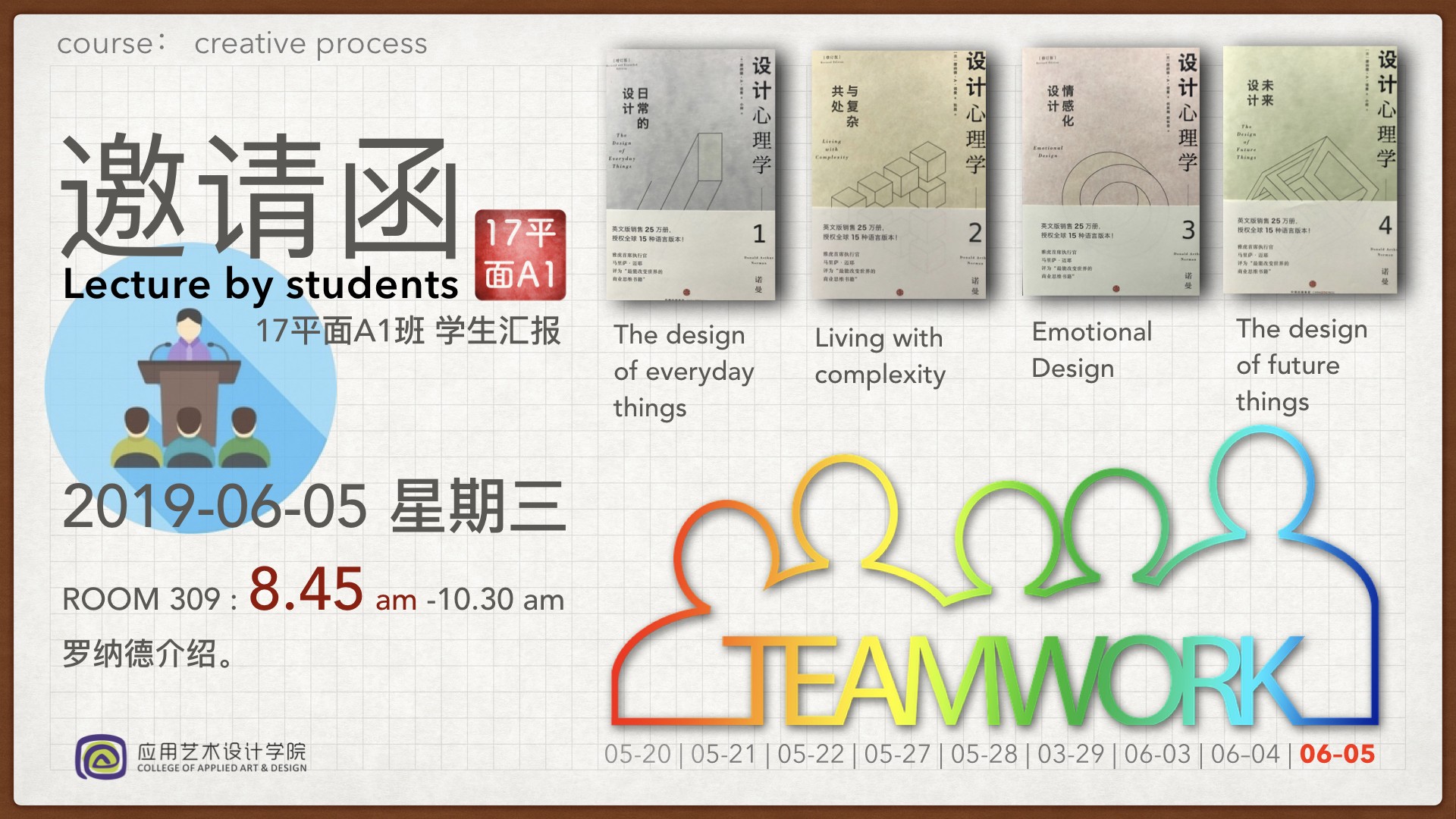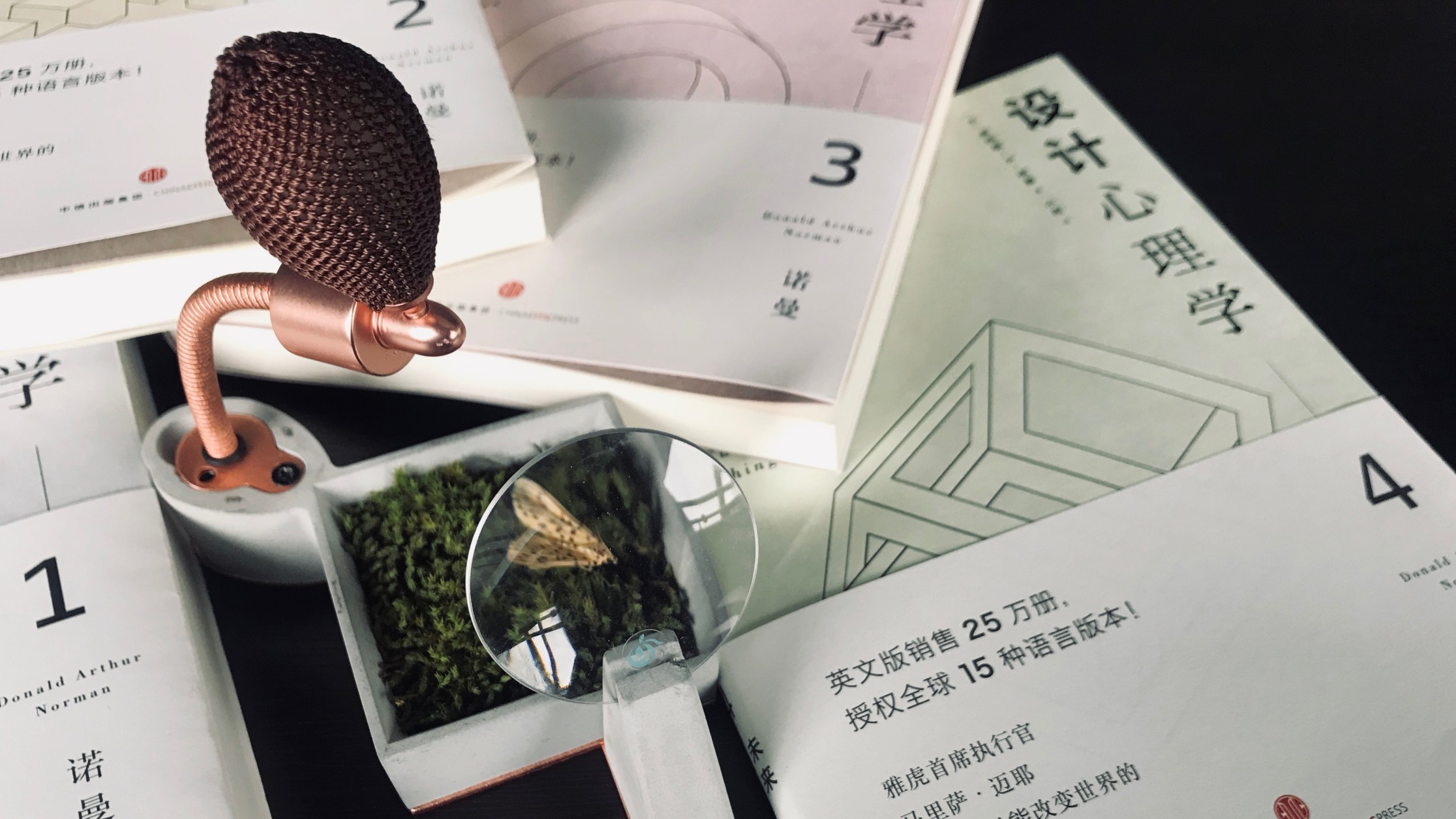
How to learn four books in just four full days of teaching?
An old Chinese proverb offers the solution: “Tell me and I forget, teach me and I remember, involve me and understand.” So, Class 17, 平面 A1, was divided into four groups, and each group was assigned certain chapters from one of Donald Norman’s books, which all revolve around ‘human-centered design.’ Each book had its own theme, with some overlapping content.
The students took on the role of teachers, and to get a comprehensive grasp of Donald Norman’s ideas, they had to deliver a lesson on their assigned book. Their presentations weren’t limited to the class; the entire college was invited to attend and listen. The audience was attentive, leading to lively discussions, and interestingly, the real teacher himself enjoyed the lecture most of all.
Throughout the exercise, we made striking observations about everyday items that are poorly designed despite their frequent use. A notable example is the USB-B plug, where users often have a 50% chance of inserting it incorrectly. Other instances include difficulties in operating water taps or opening doors inwards or outward, due to poor design choices.
Donald Norman’s books shed light on the significance of intuitive design, where products should be user-friendly and easy to understand. The readings emphasize that technology should cater to human needs rather than enslaving us as its users.
During the lecture introduction, an important term was added to the ‘human-centered design’ principles – namely “NATURE.” Thus, the concept became “Human NATURE-Centered Design.” This approach considers human behavior and focuses on preserving nature, as we must realize that humans are inseparably connected to it.
Therefore, any design should prioritize the preservation of nature.


